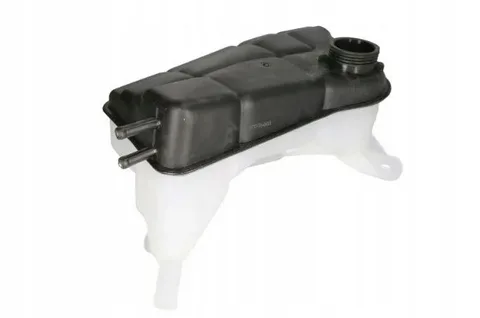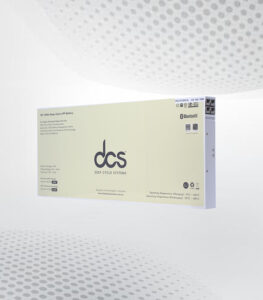When it comes to maintaining your Ford Mondeo, one crucial component you should never overlook is the Ford Mondeo Coolant Tank. This essential part of your vehicle’s cooling system is vital in ensuring your engine runs smoothly and efficiently. In this comprehensive guide, we’ll dive into everything you need to know about the Ford Coolant Tank, from understanding its function to troubleshooting common issues. Whether you’re a seasoned car enthusiast or a novice driver, identifying signs of wear and potential leaks in the coolant tank can save you from costly repairs.
Understanding the Function of the Mondeo Coolant Tank
The coolant tank, also known as the overflow reservoir or expansion tank, plays a crucial role in the Ford Mondeo’s cooling system. Its primary function is to store excess coolant that expands as the engine heats up and ensure that the engine maintains an optimal temperature during operation.
Functionality of the Coolant Tank
When the engine runs, the coolant circulates through the engine and radiator, absorbing heat to prevent overheating. As the temperature rises, the coolant expands, creating pressure within the system. The coolant tank is designed to accommodate this expansion by allowing excess coolant to flow. When the engine cools down, the pressure decreases, and the coolant returns to the system, maintaining proper levels.
Importance of Maintaining the Coolant Level
Maintaining the correct coolant level in the tank is vital for the engine’s health. Insufficient coolant can lead to overheating, which may cause severe engine damage. Regularly checking the coolant level and condition is essential to prevent any issues. If you notice that the coolant tank is frequently empty or if there are signs of leaks, it is crucial to investigate further.
The Mondeo coolant tank is integral to the vehicle’s cooling system, ensuring the engine operates efficiently. By understanding its function and maintaining proper coolant levels, drivers can help extend the life of their engine and enhance vehicle performance.
Signs of a Failing Ford Mondeo Expansion Tank
The expansion tank in a Ford Mondeo plays a crucial role in the vehicle’s cooling system, managing coolant levels and pressure. Several signs can indicate the need for immediate attention when this component starts to fail.
Coolant leaks are one of the most noticeable signs of a failing expansion tank. If you notice a puddle of coolant under your Mondeo, it could result from a cracked or damaged expansion tank. This leak reduces the coolant level in the system and can lead to overheating if not addressed promptly. Another sign is the presence of coolant within the tank that appears discoloured or contaminated. Healthy coolant should have a clear, vibrant colour. If it appears rusty or contains debris, it indicates a problem with the tank or the overall cooling system.
An overheated engine is a significant warning sign in addition to leaks and discolouration. If the temperature gauge frequently spikes into the red zone, it may be due to a malfunctioning expansion tank failing to maintain proper pressure and coolant levels. This can cause the engine to run hotter than usual, leading to severe damage if not resolved quickly.
You may also notice that the Ford Mondeo expansion tank cap is rugged to remove or bulge. A functioning cap should release pressure without any issues. If it’s showing signs of wear, it could cause coolant loss and pressure problems.
Lastly, unusual noises from the engine bay, such as gurgling or hissing sounds, may indicate that air is trapped in the cooling system or that the expansion tank is malfunctioning. Addressing these signs early can prevent costly repairs and keep your Ford Mondeo running smoothly. Regular cooling system maintenance and inspections can help catch these issues before they escalate.
How to Maintain Your Coolant Tank?
Maintaining your coolant tank is crucial for ensuring the longevity and efficiency of your vehicle’s cooling system. A well-maintained coolant tank helps prevent overheating and potential engine damage, saving you time and money on repairs.
Regular Inspections
Start by regularly inspecting the coolant tank for any signs of damage or leaks. Check for cracks or discolouration, which could indicate deterioration. Make it a habit to visually inspect the tank every month, especially before long trips. If you notice any coolant stains or puddles beneath the vehicle, it may signify a leak that requires immediate attention.
Maintain Proper Coolant Levels
Ensure that the coolant level in the tank is always within the recommended range. Your vehicle’s manual will specify the correct levels, usually marked on the tank. If the coolant is low, add a mixture of antifreeze and water as determined by the manufacturer. Avoid tap water, which may contain minerals that can corrode the cooling system over time.
Flush and Replace Coolant
Over time, coolant can become contaminated and lose its effectiveness. Depending on your vehicle and coolant type, it’s recommended to flush the coolant system and replace the coolant every two to three years. This process helps remove sludge and debris accumulating in the system, ensuring optimal performance.
Clean the Coolant Tank
Periodically cleaning the coolant tank is essential for maintaining efficiency. Use a mixture of water and mild detergent to clean the inside of the tank, removing any residue or buildup. Rinse thoroughly to ensure no cleaning agents remain, as they can cause corrosion.
Replacing Your Ford Mondeo Coolant Reservoir
The coolant reservoir in your Ford Mondeo is crucial in maintaining optimal engine temperature. Over time, it can develop cracks or leaks, leading to coolant loss and potential engine overheating. If you’re experiencing issues with your coolant reservoir, replacing it is a straightforward process you can do at home.
Tools and Materials Needed
Before starting the replacement, gather the necessary tools: a socket set, pliers, a new coolant reservoir, a funnel, and coolant. A rag or towel is also an excellent way to catch spills.
Step-by-Step Replacement
Prepare the Vehicle:
Ensure the engine is cool. Open the hood and locate the coolant reservoir near the engine bay.
Remove the Old Reservoir:
Disconnect the hoses attached to the Ford Mondeo coolant reservoir using pliers to loosen the clamps. Carefully pull the hoses off, then remove any bolts securing the reservoir to the car. Lift the old reservoir out of the engine bay.
Install the New Reservoir:
Place the new coolant reservoir in position, securing it with the bolts. Reattach the hoses and tighten the clamps to prevent leaks.
Refill Coolant:
Use a funnel to pour coolant into the new reservoir until it reaches the proper level.
Check for Leaks:
Start the engine and allow it to reach operating temperature. Inspect the reservoir and hoses for any signs of leaks.
Choosing the Right Coolant for Your Tank
Selecting the correct coolant is crucial for maintaining your tank’s optimal performance. The coolant plays a significant role in regulating the engine’s temperature and preventing overheating. Here are some essential factors to consider when choosing the proper coolant for your tank.
1. Type of Coolant
There are two main types of coolant: ethylene glycol and propylene glycol. Ethylene glycol is the most commonly used coolant because it prevents freezing and boiling. However, propylene glycol is a safer alternative, often used in applications where environmental or human safety is a concern. Ensure you choose the type that best suits your needs.
2. Compatibility
Before purchasing coolant, verify its compatibility with your tank’s materials, including hoses, gaskets, and metal components. Using an incompatible coolant can lead to corrosion and damage. Always check the manufacturer’s specifications to ensure the coolant suits your tank.
3. Additives
Many coolants contain additives that enhance their performance. Look for coolants with anti-corrosion agents, anti-foaming agents, and pH stabilisers to prolong the life of your tank’s cooling system.
4. Concentration
Coolant is typically available in concentrated and premixed forms. If you choose a focused coolant, mix it with water in the correct ratio, usually 50:50, to achieve optimal performance.
Choosing the proper coolant can significantly enhance the longevity and efficiency of your tank’s engine, ensuring smooth and reliable operation.
Troubleshooting Common Coolant Tank Issues
The coolant tank, also known as the overflow or expansion tank, plays a crucial role in a vehicle’s cooling system. It stores excess coolant and allows for thermal expansion, ensuring the engine maintains optimal temperature. However, various issues can arise with the coolant tank, leading to potential overheating and engine damage. Understanding how to troubleshoot common problems can help maintain vehicle performance.
One of the most frequent issues with the coolant tank is leaks. These can occur due to cracks in the tank itself or damaged hoses. If you notice coolant pooling under your vehicle or a drop in the coolant level, inspect the tank and associated hoses for signs of wear or damage. A simple visual inspection can often reveal cracks or signs of leakage. If a leak is detected, the damaged components should be replaced promptly to prevent further coolant loss and overheating.
Another common issue is coolant contamination. This can happen if the coolant is mixed with oil or the tank has not been cleaned properly. Contaminated coolant can lead to sludge build-up, impairing the system’s efficiency. To troubleshoot this, check the coolant’s colour and consistency. Healthy coolant should be a clear or slightly coloured liquid. If it appears brown or has a greasy texture, it’s time to flush the system and replace the coolant.
Additionally, ensure that the coolant tank cap is functioning correctly. A faulty cap can lead to improper pressure regulation, causing coolant to boil or evaporate. Inspect the cap for any signs of damage or wear and replace it if necessary. Regular maintenance, including checking coolant levels and inspecting the tank for any signs of trouble, can help prevent more severe issues. By staying vigilant, you can ensure your vehicle’s cooling system operates efficiently, extending its lifespan and performance.
Conclusion
Regularly checking and maintaining your Ford Mondeo Coolant Tank is crucial for preventing engine overheating and ensuring your vehicle runs efficiently. Addressing visible cracks and leaks and maintaining optimal coolant levels can help you avoid costly repairs and extend the life of your engine. By following recommended practices, such as using the correct type of coolant and inspecting the tank for damage, you can prevent common issues before they escalate. Replacing a faulty coolant tank and ensuring secure hose connections are straightforward tasks that can significantly affect your car’s performance.
FAQS
Q: How often should I check the Ford Mondeo Coolant Tank?
A: It’s advisable to check the Ford Mondeo Coolant Tank at least once a month or before long trips. Regular inspections help identify issues early, ensuring your vehicle runs smoothly.
Q: What coolant should I use for my Ford Coolant Tank?
A: Refer to your vehicle’s owner’s manual for the recommended coolant type. Using the correct coolant is essential for maintaining engine temperature and preventing corrosion.
Q: Can I replace the coolant tank, or need a mechanic?
A: Replacing the Ford Coolant Tank is straightforward and can be done with basic tools. However, if you’re not comfortable doing it yourself, it’s best to consult a professional mechanic.
Q: What are the signs of a failing coolant tank?
A: Common signs include visible cracks, coolant leaks, low coolant levels, engine overheating, and discoloured or contaminated coolant. Regular inspection can help detect these issues early.




